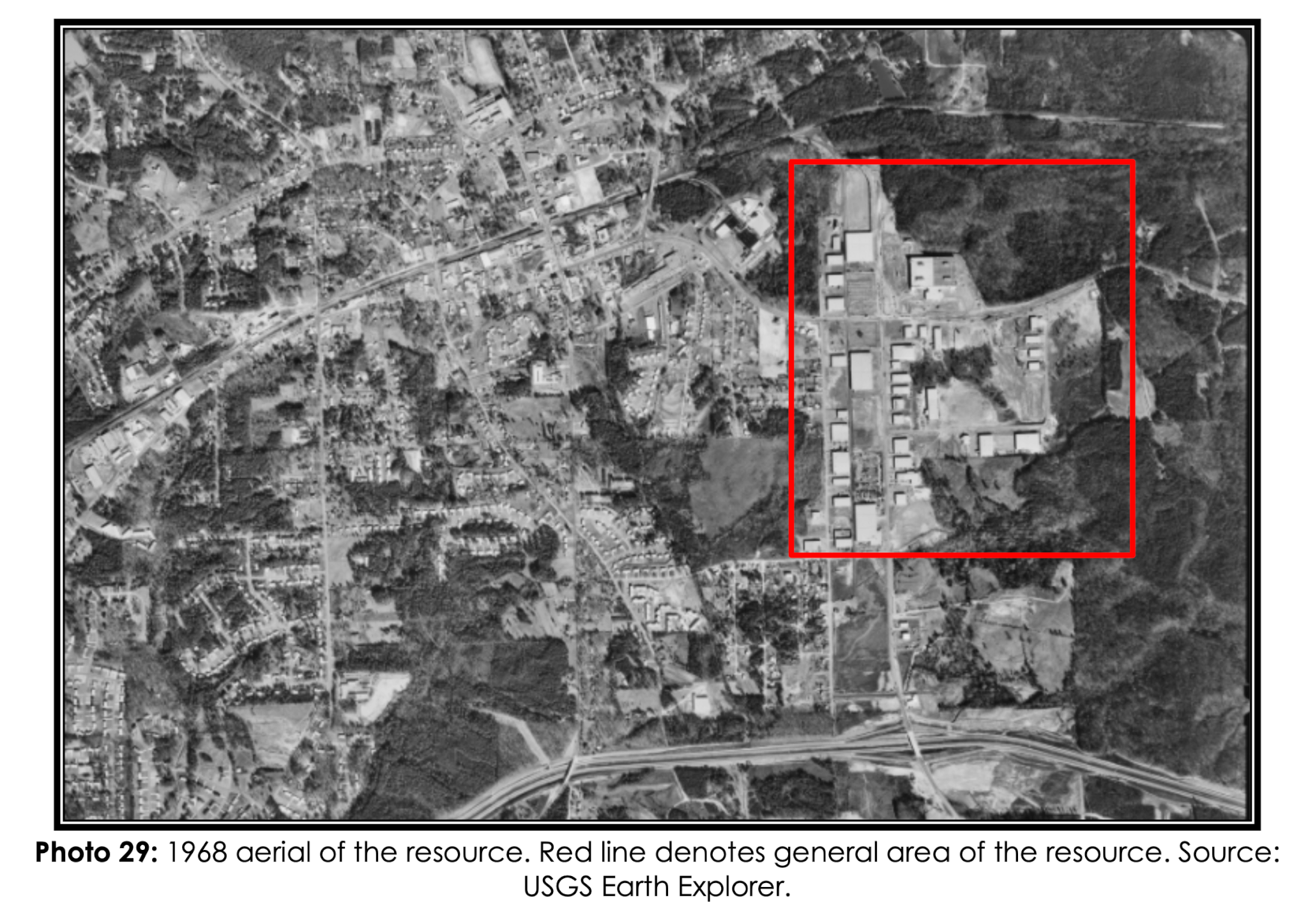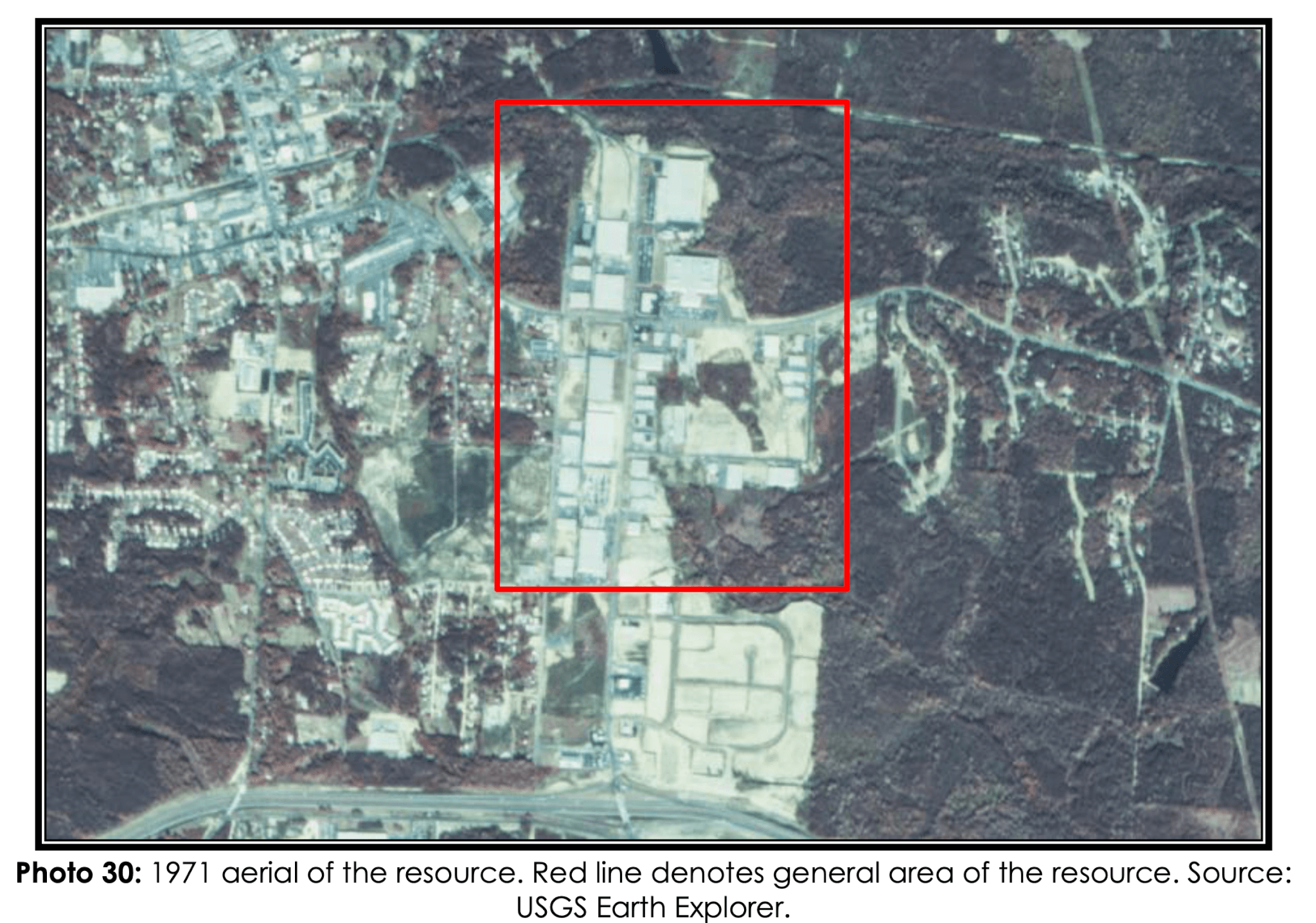The following gives a detailed history on the creation of Stone Mountain Industrial Park, most of which has now become part of Tucker Summit Community Improvement District. The park was designed and developed in the mid-20th century and has stood the test of time. Read more to learn about its construction and company behind its creation.
According to the DeKalb County tax assessor’s record, between 1961 and 1971 approximately 42 historic buildings comprised what was known as the Stone Mountain Industrial Park Historic. Another 15 non-historic buildings were constructed from 1972 to 2002 and the area also included a recreation field.
By 1968, there were approximately 30 buildings constructed within the district. Two rail spurs from the GCAN Railroad ran north of the district and south into district on either side of 2280 Mountain Industrial Blvd. Five buildings were constructed between 1968 and 1971, and another 7 were added by the early 1980s. During this same time, Mountain Industrial Blvd

Established in 1950 by H. A. Pattillo, and his sons, Pat and Dan Pattillo, Decatur, Georgia-based Pattillo Construction Company began developing Stone Mountain Industrial Park in 1960. The company constructed 21 buildings in 18-months, which was an extremely fast pace for the mid-20th century, especially considering the size and scale of the industrial buildings. By the time of the area’s ribbon cutting in 1963, the area was touted as Atlanta’s second largest industrial district, behind the Fulton Industrial Boulevard area.
At the ribbon cutting, Governor Carl Sanders described the area as, “a clear and living example of the New South, and the New Georgia, where the industrial pulse beats stronger with each passing day.” US 78 was constructed through the park in the mid-1960s, and Pattillo Construction Company marketed the area as accessible by rail and car.
The mid-1960s saw a construction boom of industrial buildings in Atlanta and throughout the state, with more than $200,000,000 in industrial capital investment statewide in 1964 alone. Industrial development wasn’t the only thing booming in DeKalb County in the mid-1960s; the Tucker census district’s population, where the industrial park is located, rose 307% from 1960 to 1970, adding roughly 30,000 residents. The area saw the largest population growth of any census district in DeKalb County in that decade.
In 1973-1974, another industrial park, the Atlanta-Tucker Industrial Park was developed just north of the area along Mountain Industrial Road by the Royal Atlanta Development Corporation.
The Stone Mountain Industrial Park Historic District is a mid-20th century light industrial complex of warehouses and manufacturing facilities. Approximately half of the historic buildings within the district feature elements consistent with the international style, including rectilinear massing, flat roofs without eaves, metal windows that are paired or repeated in horizontal bands across the buildings’ facades. Most of the buildings are one story and clad in a red brick veneer with stone cladding the foundation.
Loading bays are prevalent on the side elevations of buildings within the district. Some of the earliest buildings in the district, located along Tucker Industrial Road feature decorative concrete breezeblock. One historic rail spur is located within the district, running north-to-south between 4538 Hugh Howell Road and 2232 Mountain Industrial Blvd up to meet the GCAN RR north of the district. The rail spur was laid during the development in the early 1960s.
Buildings within the district have a standard setback of approximately 65 feet from the edge of pavement. Grassed lawns and concrete-paved parking lots are prevalent throughout. Side roads, such as Flintstone Drive and Tucker Industrial Road feature granite curbing. Hugh Howell Road and Mountain Industrial Blvd have non-historic curb-and-gutter. Hugh Howell Road has non-historic concrete sidewalks in the ROW. The Stone Mountain Industrial Park Historic District is located in a planned development bound to the north by wooded, vacant land, to south and east by non-historic light industrial and commercial development, and to the east by historic residential development.
The Stone Mountain Industrial Park Historic District has been determined to possess integrity in the areas of location, setting, design, materials, workmanship, feeling and association. Buildings within the district area located in their original site of construction. While Mountain Industrial Blvd was widened in the late 1970s, the district’s integrity is expressed along its side streets, which are insular in nature and protect most of the area’s viewshed from non-historic development. The resource’s design, materials, and workmanship are conveyed through the concentration of historic buildings within the district, which largely remain unaltered.
